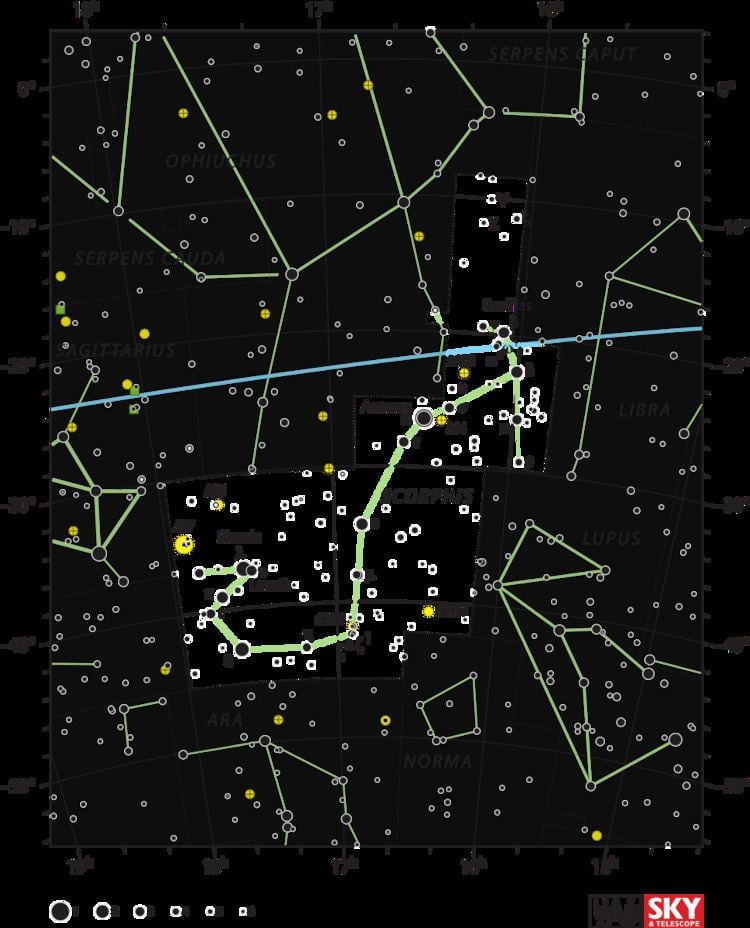Magnitude 2.31 Apparent magnitude (V) 2.31 | ||
 | ||
Similar Kappa Scorpii, Pi Scorpii, Theta Scorpii, Xi Scorpii, Mu1 Scorpii | ||
Epsilon Scorpii (ε Sco, ε Scorpii) is a star in the southern zodiac constellation of Scorpius. Patrick Moore introduced the name Wei but this seems to be a misreading; Wěi (尾), meaning the Tail, was originally the name of a Chinese asterism or Xiù comprising the stars ε, μ1−2, ζ1−2, η, θ, ι, κ, υ, and λ Scorpii. This star has an apparent visual magnitude of +2.3, making it the fifth-brightest member of the constellation. Parallax measurements made during the Hipparcos mission provide an estimated distance to this star of around 63.7 light-years (19.5 parsecs).
Epsilon Scorpii has a stellar classification of K1 III, which indicates it has exhausted the supply of hydrogen at its core and evolved into a giant star. The interferometry-measured angular diameter of this star, after correcting for limb darkening, is 5.99 ± 0.06 mas, which, at its estimated distance, equates to a physical radius of nearly 13 times the radius of the Sun. Presently it is generating energy through the nuclear fusion of helium at its core, which, considering the star's composition, places it along an evolutionary branch termed the red clump. The star's outer atmosphere has an effective temperature of 4,560 K, giving it the orange hue of a cool K-type star. It is classified as a variable star, although it only varies by around 0.01–0.02 magnitudes. Epsilon Scorpii is an X-ray source with a luminosity of (1.5–1.6) × 1027 erg s−1.
Modern legacy
Wei appears on the flag of Brazil, symbolising the state of Ceará.
